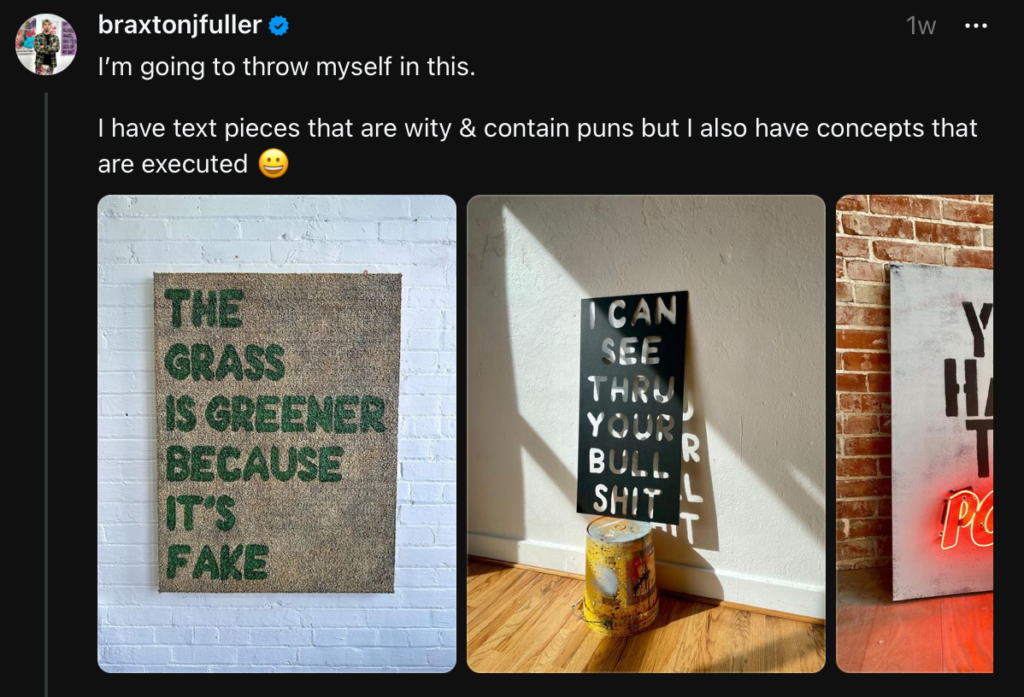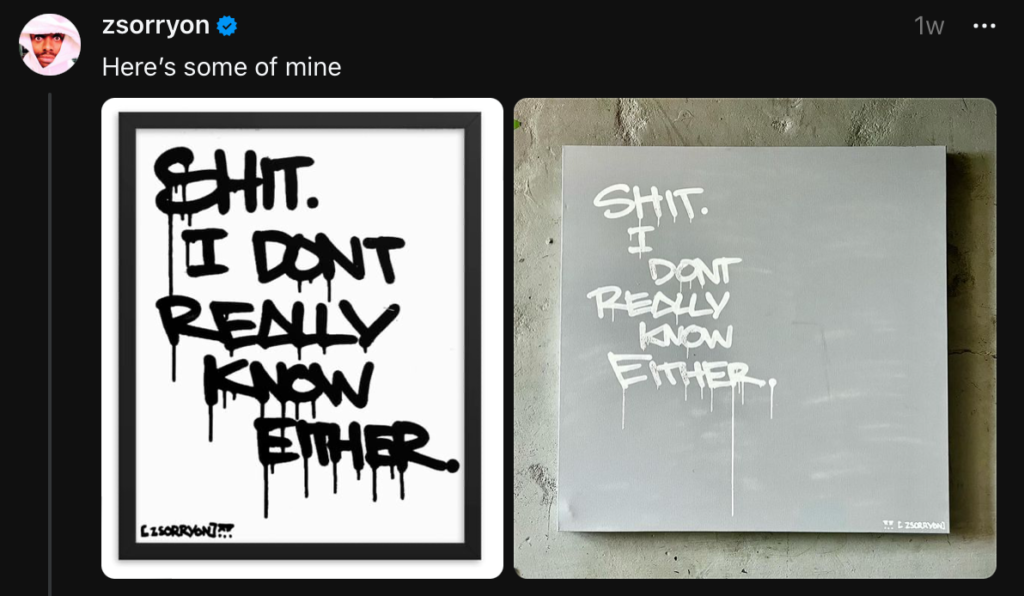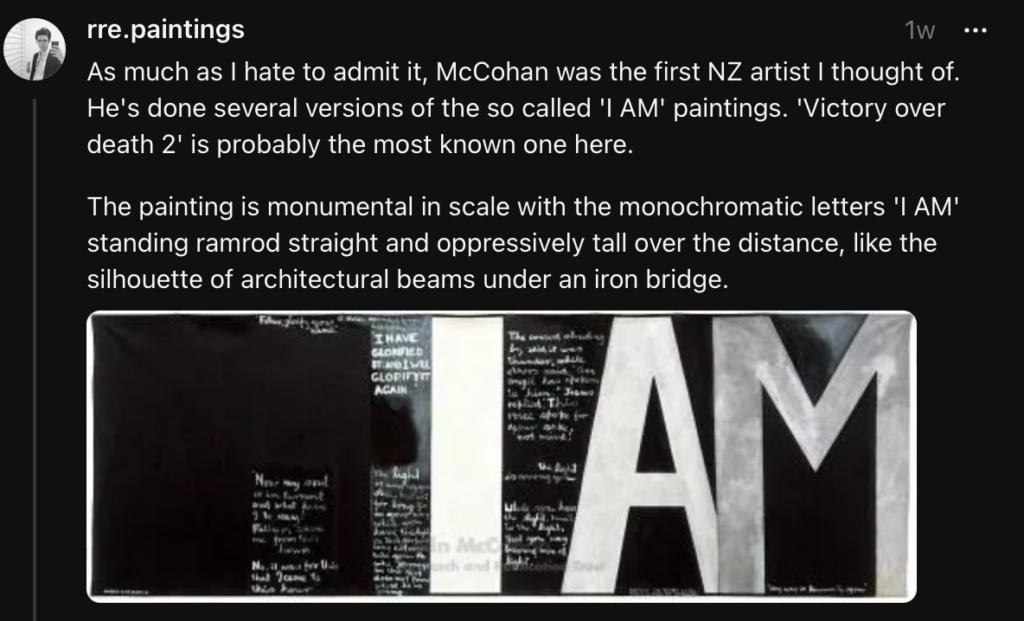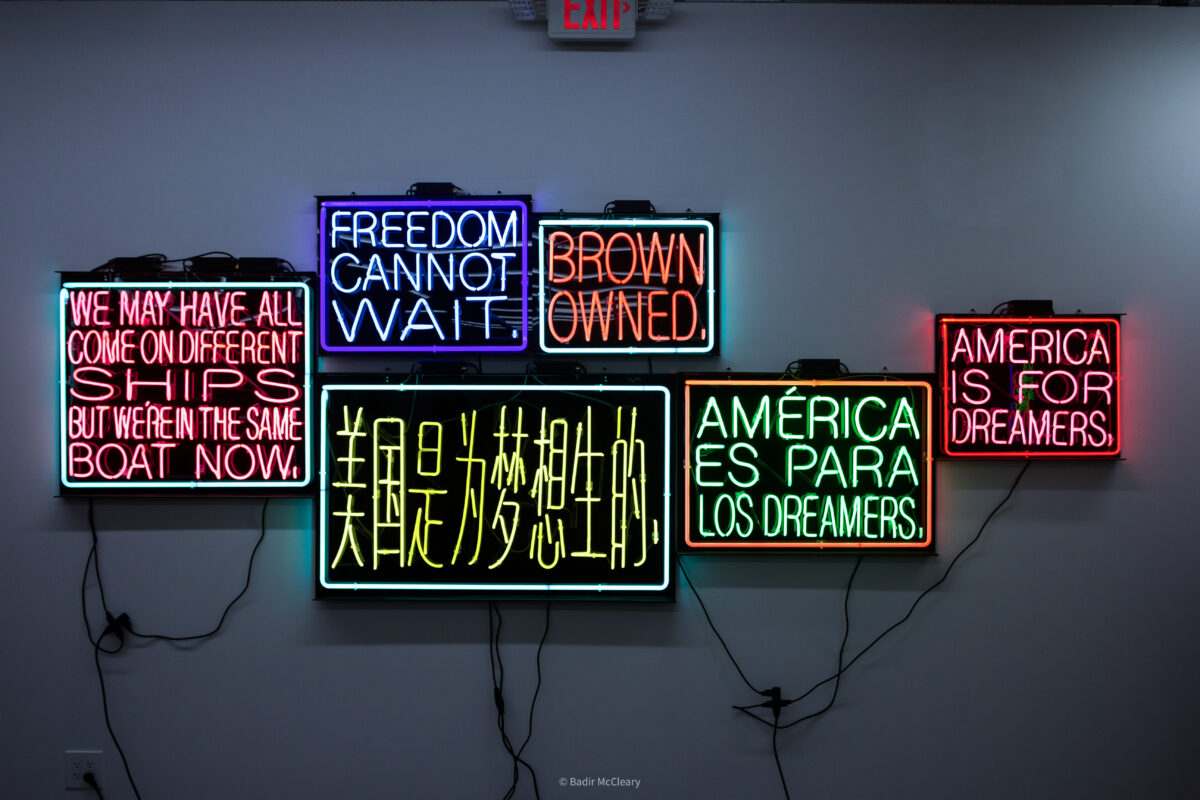A Journey Through Text-Based Modern and Contemporary Art
In December, I embarked on an intriguing journey, curating a threads conversation-style exhibition of text-based works from modern and contemporary art. It turned out to be more than just an academic exercise; it became a vibrant conversation among art enthusiasts. It was so cool that I figured that doing a different style or art period each month would be very exciting and educational for folks who want to discuss Modern and Contemporary Art! Let me walk you through this remarkable array of artists and their unique perspectives on text in art. We kicked off the month with Christopher Wool, On Kawara, and Glenn Ligon, who are iconic for their text-based puns and the historical significance of their work. They set a high bar for the exhibition, provoking plenty of thought and discussion. Interestingly, I made a conscious choice to omit Richard Prince, preferring to spotlight less predictable choices.
Then, I revisited a piece by Barbara Kruger, displayed at the Hirshhorn in DC. Kruger is known for her bold use of text to convey powerful messages, and she even had to defend her intellectual property against the likes of Supreme. This incident opens up a fascinating dialogue about the intersection of art, commercialism, and intellectual property. Moving on, I considered the works of John Baldessari and Ed Ruscha for their simplicity and profound impact. Baldessari’s “What Is Painting” (1966-68) is particularly intriguing, as it blurs the lines between text and imagery.
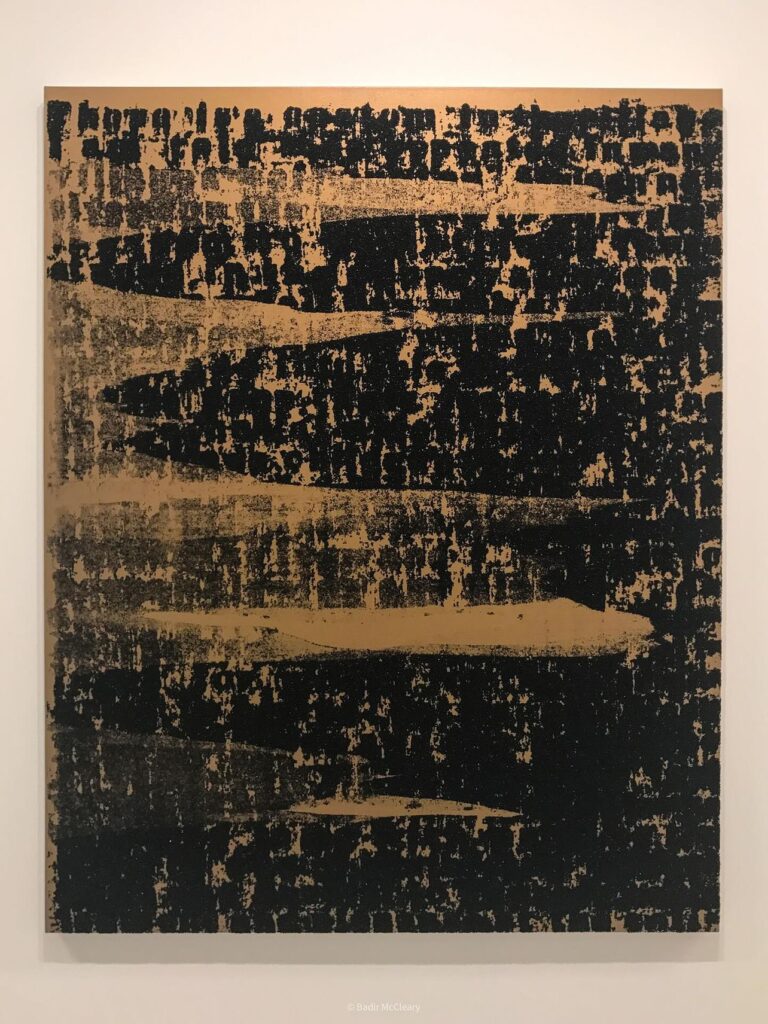
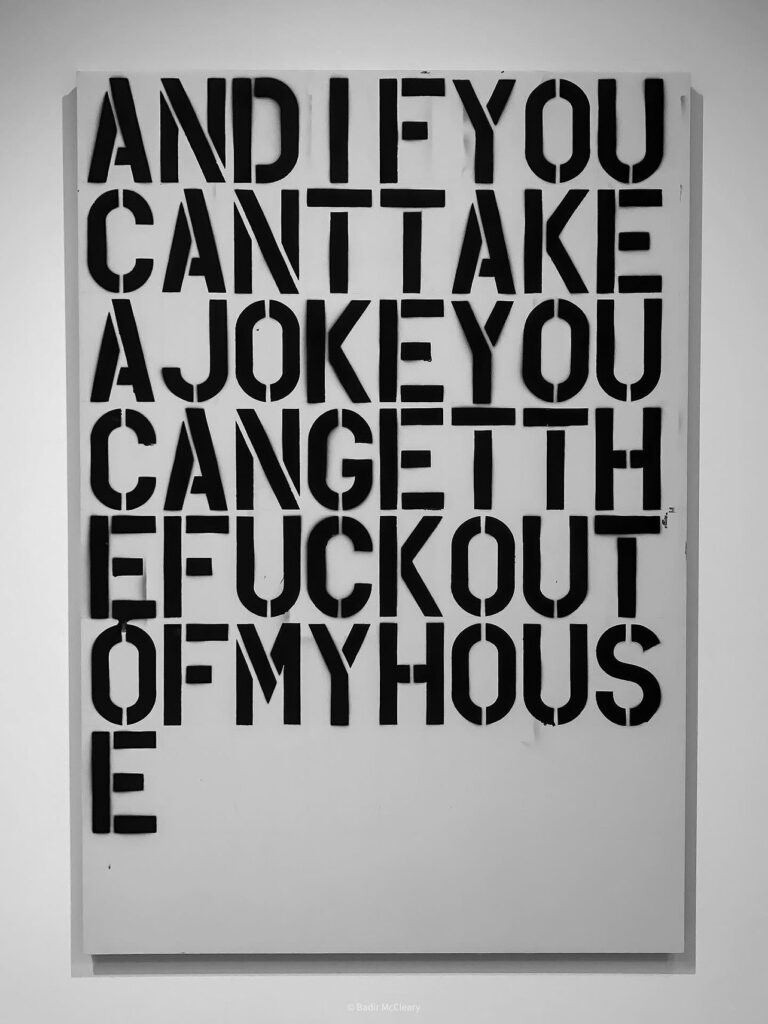
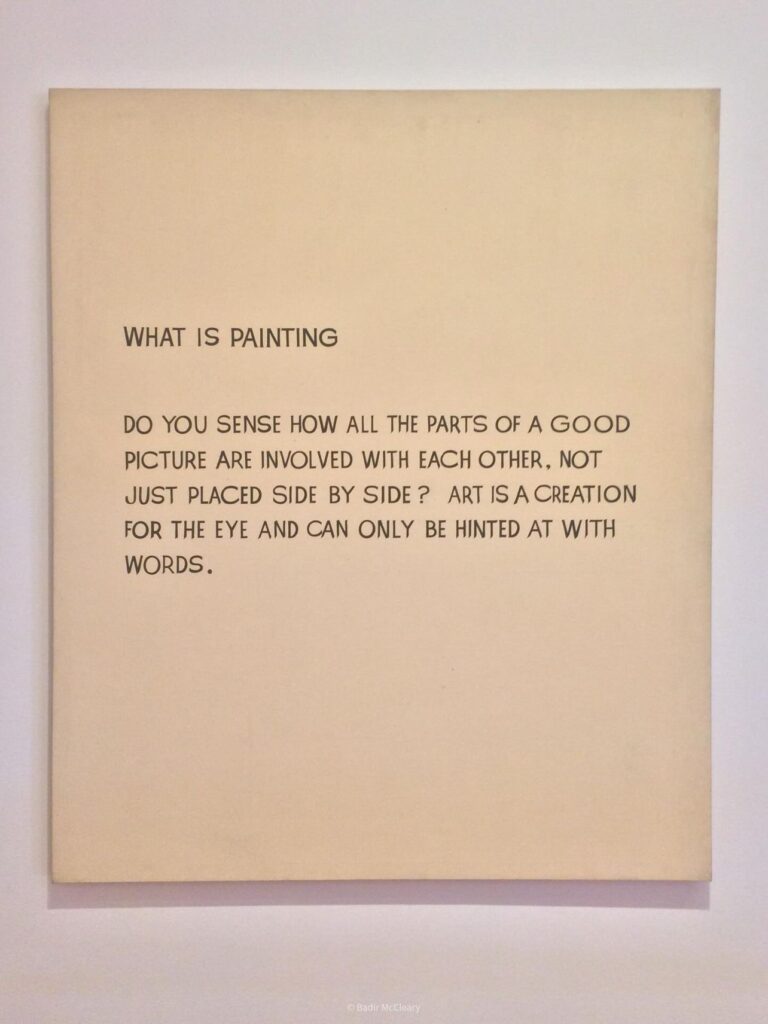
Jason Rhoades’s installations were also a highlight. Known for their neon lighting and humorous yet thought-provoking statements, one such work at Hauser and Wirth in Los Angeles exemplified the complexity and layered nature of contemporary communication. The exploration then turned to Pope L., particularly his “Skin Sets” series. These works use text to explore race, color, and labeling. Pope L.’s passing added a poignant note to our exploration, reminding us of the lasting impact of an artist’s work.
Sam Durant’s light boxes, seen at Blum and Poe, Los Angeles, brought a dynamic element to the exhibition. His use of bold colors and thought-provoking text creates an illuminating presence, akin to the city’s billboards yet distinctly more inspiring. Peter Holzhauer’s work, “Door” (2018), discovered at the Art Los Angeles Contemporary Fair, brought a sense of nostalgia and humor. The piece resonates with childhood memories, showcasing the playful and often mischievous nature of text in art.
Concluding the month, Patrick Martinez’s work was featured. Like Jason Rhoades, Martinez uses illuminated text, but his focus is more on community and local styles, creating a direct and impactful dialogue with the viewer. This virtual exhibition wasn’t just a showcase of artworks; it was a journey through the diverse and evolving landscape of text-based art. Each artist brought a unique perspective, challenging and enriching our understanding of contemporary art.


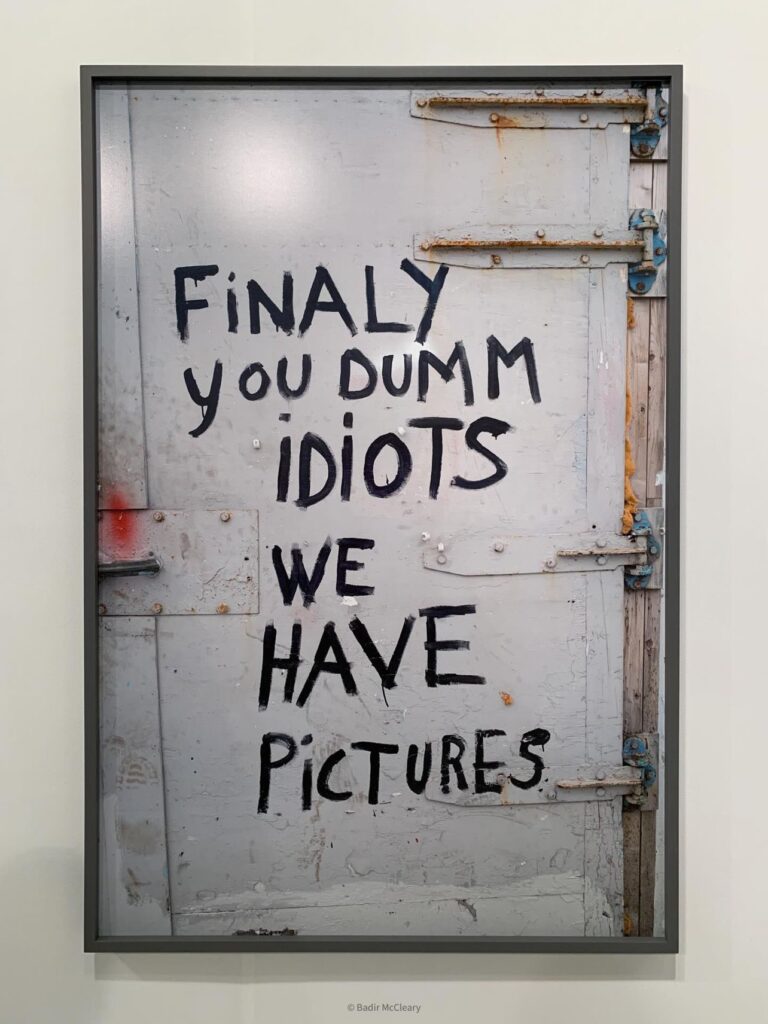

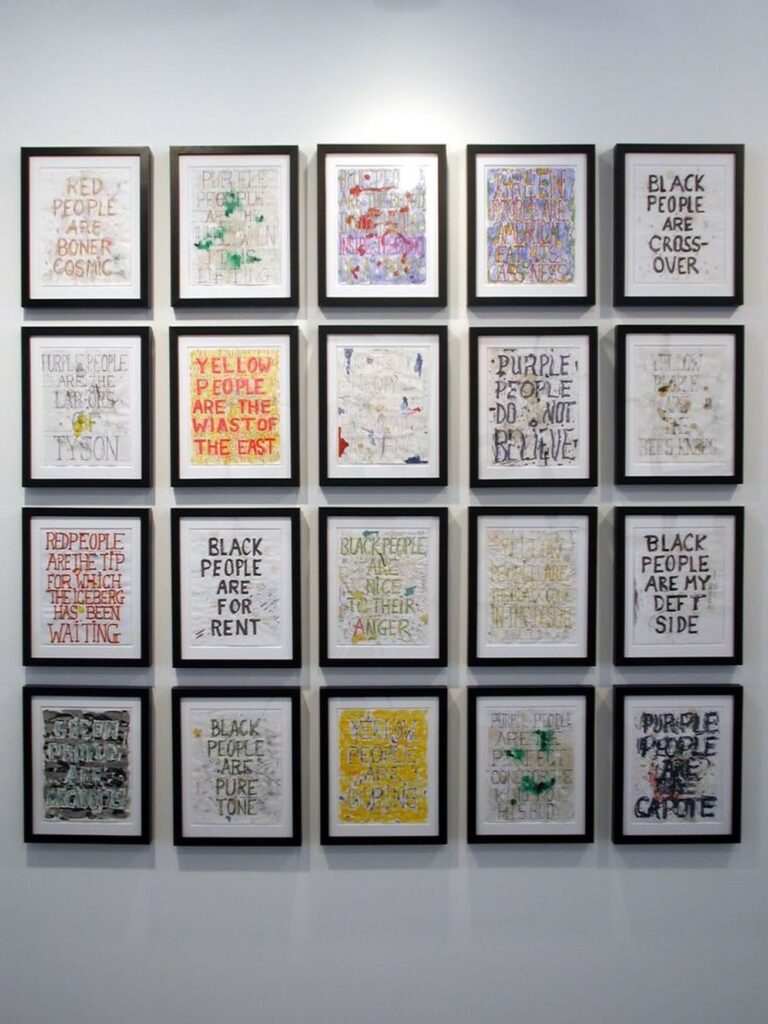
Here are some additions from some of the followers on Threads.
